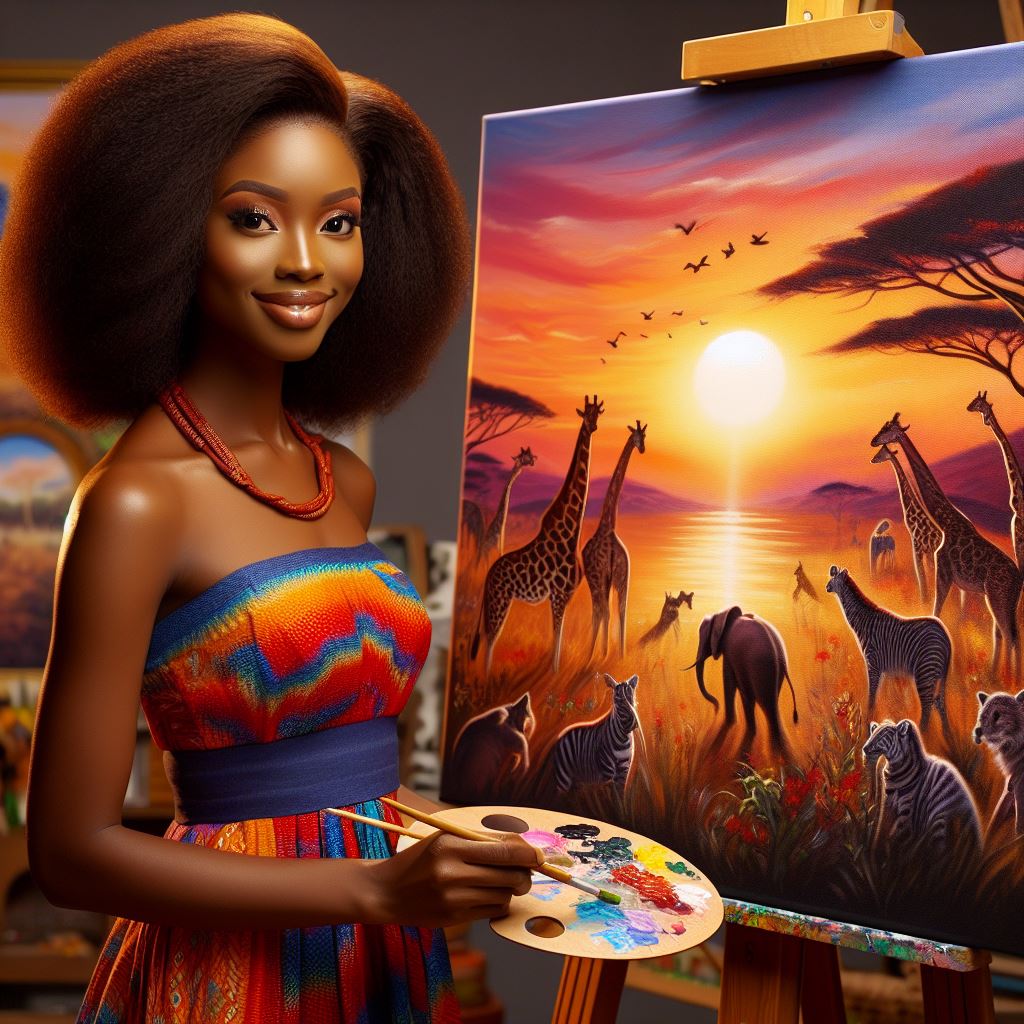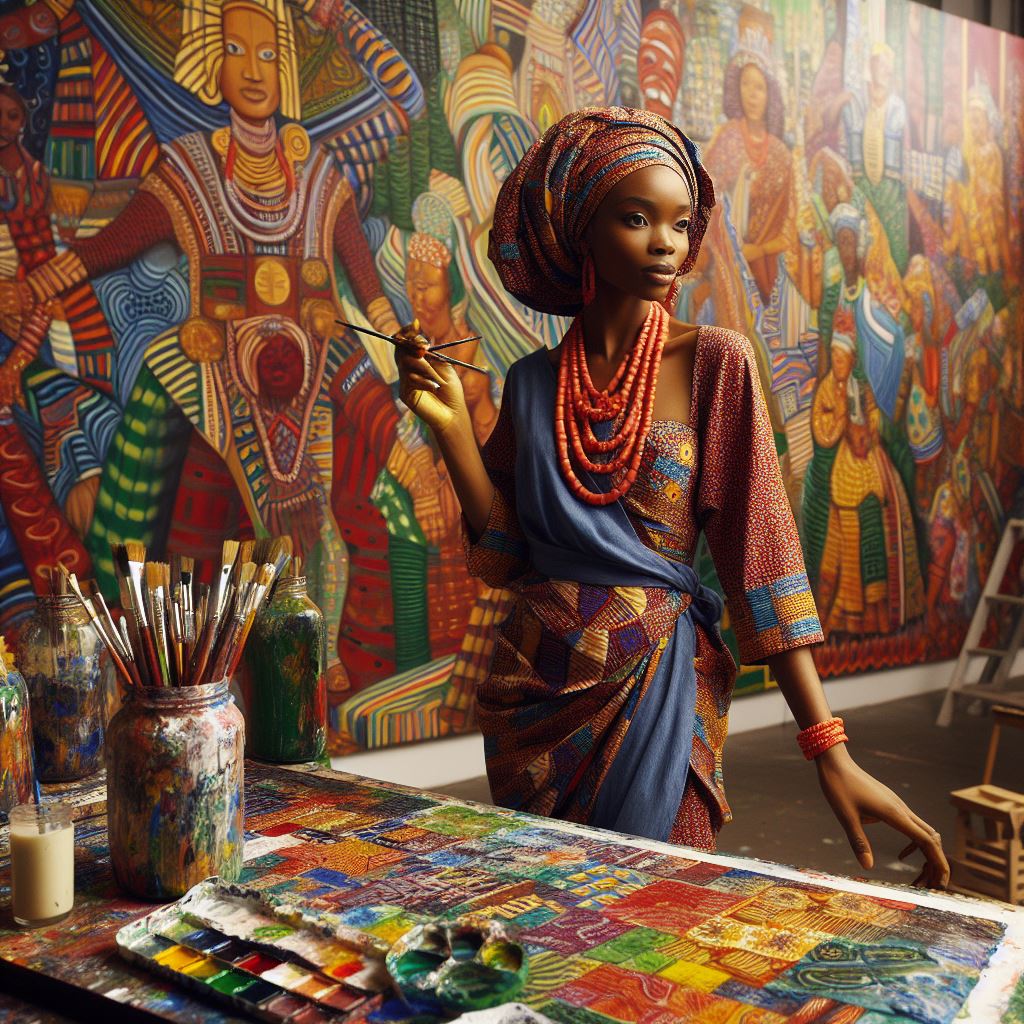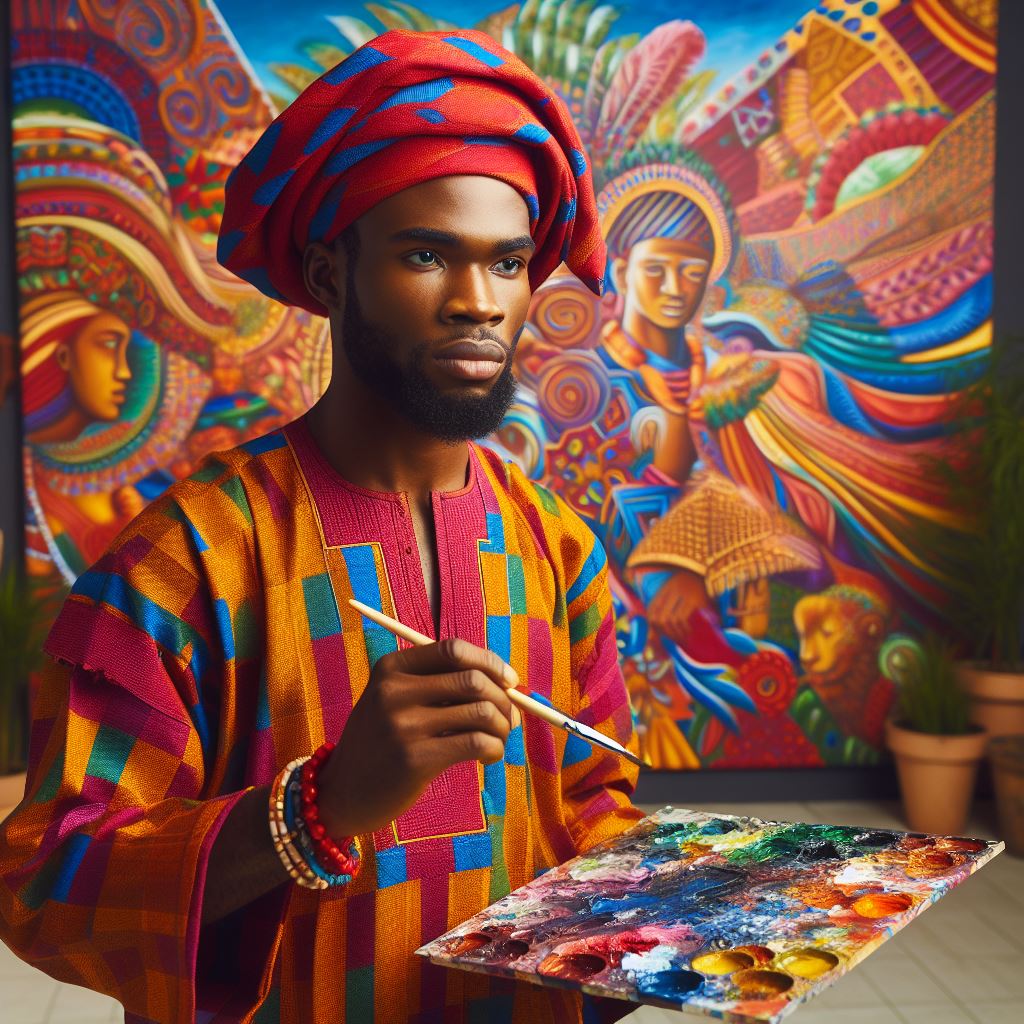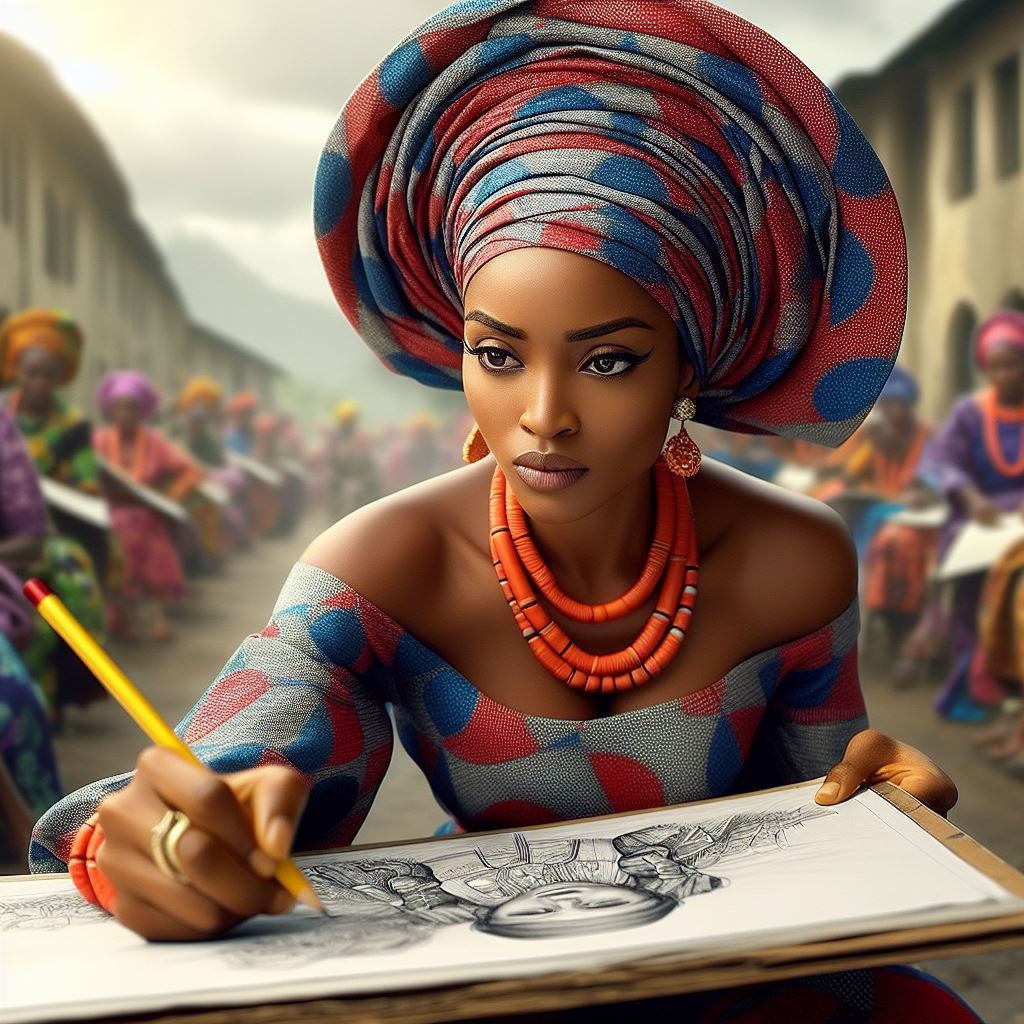Introduction
Fine and Applied Art encompasses a multitude of creative disciplines, from traditional painting and sculpture to cutting-edge multimedia design.
Art is not just a form of expression; it is a reflection of society’s cultural values and a catalyst for innovation.
Defining Fine and Applied Art
Fine and Applied Art involves the creation of visually appealing works that serve both aesthetic and practical purposes.
It encompasses various mediums, techniques, and styles, each offering unique avenues for artistic expression.
Importance of Art in Society
Art plays a vital role in society, enriching our lives, stimulating our imaginations, and provoking thought.
It reflects cultural identities, preserves historical narratives, and fosters social change.
Overview of Career Opportunities
In the field of Fine and Applied Art, the career possibilities are endless. From visual artists and graphic designers to art educators and museum curators, there is a wide range of professions to explore.
Moreover, advancements in technology have opened up new opportunities in digital art, animation, and interactive media, expanding the scope of career options for aspiring artists.
As you embark on your journey into the world of Fine and Applied Art, remember that the opportunities are as vast and diverse as your imagination.
Whether you dream of creating timeless masterpieces, shaping the visual landscape, or inspiring future generations, the world of art offers endless possibilities for creativity and fulfillment.
Educational requirements
In order to pursue a successful career in fine and applied art, individuals must meet certain academic qualifications and gain practical training and hands-on experience. Here is a breakdown of the educational requirements needed:
Academic qualifications
- A high school diploma or equivalent is typically the minimum requirement to pursue a degree in fine and applied art.
- Many universities and colleges require a portfolio showcasing the applicant’s artistic abilities as part of the application process.
- For undergraduate programs, a Bachelor’s degree in fine arts or a related field is usually necessary to enter the industry.
- Graduate programs, such as Master of Fine Arts (MFA) degrees, may require a Bachelor’s degree and previous experience in the field.
Importance of practical training and hands-on experience
While academic qualifications are essential, practical training and hands-on experience play a significant role in preparing individuals for a career in fine and applied art.
Here are some reasons why practical experience is crucial:
- Exposure to real-world projects helps aspiring artists develop their skills and refine their techniques.
- Internships and apprenticeships provide valuable insights into the industry and allow students to network with professionals.
- Working on collaborative projects with peers enhances teamwork and communication skills, which are essential in the art field.
Potential educational institutions offering programs in fine and applied art
There are numerous educational institutions around the world that offer programs in fine and applied art, catering to students with diverse interests and aspirations. Some of the top institutions include:
- Rhode Island School of Design (RISD) – Known for its comprehensive art and design programs that emphasize creativity and innovation.
- School of the Art Institute of Chicago (SAIC) – Offers a range of undergraduate and graduate programs in fine arts and design.
- Parsons School of Design – An esteemed institution offering programs in architecture, fashion, and fine arts.
- Central Saint Martins – Located in London, this institution is renowned for its avant-garde approach to art and design education.
- Academy of Art University – Based in San Francisco, this academy offers a diverse range of programs in fine and applied art.
By obtaining the necessary academic qualifications, gaining practical training and hands-on experience, and exploring educational institutions that specialize in fine and applied art, individuals can pave the way for a successful and fulfilling career in the industry.
Read: Developing Critical Thinking in Language Arts
Career options in fine art
Various career paths within the fine art industry such as painter, sculptor, and illustrator
When it comes to pursuing a career in fine art, there are a multitude of options available for aspiring artists to explore.
Whether you have a passion for painting, sculpture, or illustration, the fine art industry offers diverse opportunities for individuals to showcase their creativity and talent.
Painter
Painters are artists who create visual artwork using various painting techniques and mediums.
They may specialize in oil painting, watercolors, acrylics, or mixed media. Painters often work independently, creating pieces for galleries, exhibitions, or private collectors.
Sculptor
Sculptors are artists who work with three-dimensional materials such as clay, wood, metal, or stone to create sculptures and installations.
They can work on large-scale public art projects, commissions, or smaller pieces for gallery exhibitions.
Illustrator
Illustrators are artists who specialize in creating visual interpretations of concepts, ideas, and narratives.
They often work in publishing, advertising, and design, producing illustrations for books, magazines, advertisements, and digital media.
The different settings where fine artists can work, including galleries, museums, and art studios
Aside from these specific career paths, fine artists have the opportunity to work in various settings within the art industry.
Galleries, museums, and art studios are common environments where fine artists can exhibit their work, collaborate with other artists, and engage with the public.
Working in a gallery allows fine artists to showcase their work to a wider audience and connect with potential buyers and collectors.
Museums provide artists with the opportunity to exhibit their work alongside historical and contemporary art pieces, contributing to a broader cultural dialogue.
Art studios serve as creative spaces where artists can experiment, collaborate, and develop their artistic practice.
Artists often rent studio space or share communal studios with other creatives, fostering a sense of community and collaboration within the art world.
The potential for freelance work and entrepreneurship in the fine art sector
For artists looking to take a more entrepreneurial route, freelance work and entrepreneurship offer opportunities to create and sell art independently.
Fine artists can sell their work online, at art fairs, or through commissions, allowing them to have more control over their artistic practice and business endeavors.
Overall, the fine art industry provides a wealth of career options for artists to explore and pursue.
Whether you choose to specialize as a painter, sculptor, or illustrator, or work in galleries, museums, or art studios, there are endless possibilities for creative individuals to thrive and make a lasting impact in the field of fine art.
Read: How to Apply for Communication Arts Programs
Career options in applied art
Career opportunities in applied art fields such as graphic design, fashion design, and interior design
When considering a career in applied art, there are various options for individuals with a passion for creativity and design. Below are some of the career opportunities in applied art fields:
Graphic Design
Graphic design involves creating visual concepts using computer software to communicate ideas that inspire, inform, or captivate consumers. Professionals in this field work in advertising, marketing, and branding.
Fashion Design
Fashion designers are responsible for creating clothing, accessories, and footwear that reflect current trends and meet consumer demands. They work in fashion houses, retail companies, and design firms.
Interior Design
Interior designers plan and execute the layout and decoration of interior spaces to enhance the functionality and aesthetics of residential, commercial, or industrial environments. They work for design firms, architectural companies, and real estate developers.
The diverse industries where applied artists can find employment, such as advertising, fashion, and publishing
Applied artists can find employment in a diverse range of industries, including advertising, fashion, and publishing:
- Advertising: Applied artists create visual elements for advertisements, such as logos, packaging, and promotional materials, to attract and engage target audiences.
- Fashion: Applied artists contribute to the design and production of clothing, accessories, and textiles for the fashion industry, collaborating with fashion designers and retailers.
- Publishing: Applied artists work on book covers, illustrations, and layouts for magazines, newspapers, and online publications, enhancing the visual appeal of printed and digital media.
The potential for collaboration with other professionals, such as engineers and architects, in applied art projects
Additionally, applied artists have the potential to collaborate with other professionals, such as engineers and architects, on various projects:
- Engineers: Applied artists may work with engineers to design visual elements for technical manuals, product packaging, or engineering diagrams, combining art and technology to communicate complex information effectively.
- Architects: Applied artists can collaborate with architects on interior design projects, creating renderings, floor plans, and 3D models to visualize and communicate design concepts to clients and stakeholders.
By exploring these career options in applied art and leveraging collaboration opportunities, individuals can pursue fulfilling and creative professions in the art and design industry.
Read: Famous Nigerian Alumni of Communication Arts Programs

Explore Further: The Future of Nigerian Fashion Design Industry
Learn More: Impact of African Art in Global Design Trends
Skills and Qualities Needed
The key skills and qualities required to succeed in a career in fine and applied art, such as creativity, attention to detail, and problem-solving abilities
In the world of fine and applied art, creativity reigns supreme. Artists must possess a keen imagination and innovative spirit to bring their visions to life.
Attention to detail is equally crucial, as every stroke and shade contributes to the overall masterpiece. Problem-solving abilities are indispensable.
Artists encounter various challenges, from technical difficulties to conceptual hurdles, requiring quick thinking and adaptability.
Without these skills, navigating the complexities of artistic creation becomes daunting.
The importance of staying up-to-date with trends and technologies in the art industry
Staying up-to-date with trends and technologies is paramount.
The art industry evolves rapidly, with new mediums, techniques, and styles emerging constantly.
Artists must embrace change, incorporating modern tools and methodologies into their practice to remain relevant.
Examples of successful artists who exemplify these skills and qualities
For instance, consider the renowned painter, Banksy.
His anonymous street art challenges societal norms and sparks conversations worldwide.
Banksy’s ability to adapt his work to contemporary issues demonstrates the importance of staying current in the ever-shifting landscape of art.
Similarly, the sculptor, Ai Weiwei, uses his art to address political and social injustices.
His provocative installations push boundaries and provoke thought, showcasing the power of art to effect change.
Ai Weiwei’s fearless approach exemplifies the courage and conviction necessary to succeed in the art world.
On the other hand, the digital artist, Beeple, harnesses technology to create mesmerizing visual experiences.
His groundbreaking use of CGI and blockchain has revolutionized the art market, earning him global acclaim.
Beeple’s mastery of both traditional and digital mediums underscores the importance of versatility in modern artistry.
Moreover, the photographer, Annie Leibovitz, captures intimate moments with unparalleled skill and precision.
Her ability to evoke emotion through imagery has made her one of the most influential photographers of our time.
Leibovitz’s dedication to her craft and unwavering commitment to excellence serve as inspiration for aspiring artists.
Therefore, succeeding in a career in fine and applied art requires a unique blend of skills and qualities.
Creativity, attention to detail, and problem-solving abilities form the foundation of artistic excellence.
However, staying up-to-date with industry trends and technologies is equally essential.
By honing these skills and embracing innovation, aspiring artists can carve out their own path to success in the dynamic world of art.
Read: Communication Arts: Job Prospects and Salaries
Challenges and Opportunities
The challenges faced by professionals in the fine and applied art fields, such as competition, market saturation, and fluctuating demand
Professionals in the fine and applied art fields face numerous challenges that can hinder their career growth. These challenges include:
- Intense competition from other artists and designers
- Market saturation, making it difficult to stand out
- Fluctuating demand for specific art forms or styles
Potential opportunities for growth and advancement in the industry, such as networking, establishing a unique artistic voice, and leveraging social media for promotion
Despite these challenges, there are also opportunities for growth and advancement in the industry. Professionals can take advantage of the following opportunities:
- Networking with other artists, galleries, and potential clients
- Establishing a unique artistic voice to differentiate oneself
- Leveraging social media platforms for self-promotion and reaching a wider audience
Tips for Overcoming Obstacles
To maximize career opportunities in fine and applied art, professionals can follow these tips:
- Focus on continuous learning and skill improvement
- Seek feedback from mentors and peers to grow professionally
- Stay updated on industry trends and developments
- Collaborate with other artists on projects to expand your network
- Diversify your portfolio to appeal to a broader range of clients
- Participate in art exhibitions, shows, and competitions to gain exposure
- Consider pursuing additional education or certifications to enhance your credentials
- Develop a strong online presence through a professional website and active social media profiles
By taking proactive steps to address challenges and capitalize on opportunities, professionals in the fine and applied art fields can build successful and fulfilling careers in the industry.
Conclusion
Overall, career opportunities in fine and applied art are vast and diverse, offering individuals a chance to express their creativity and passion.
With the increasing demand for art in various industries, there is a growing need for skilled professionals in this field.
Artists can explore careers such as graphic designing, illustration, art curation, art therapy, and many more, both in traditional and digital formats.
It is crucial for aspiring artists to build a strong portfolio, network with professionals in the industry, and continuously enhance their skills through workshops and courses.
By pursuing a career in fine and applied art, individuals have the opportunity to make a significant impact on society by creating meaningful and thought-provoking work.
Whether you are interested in creating visual masterpieces or designing innovative products, the art industry offers a wide range of career paths to explore.
Therefore, I encourage all readers to consider a career in fine and applied art, as it can be a fulfilling and rewarding journey for those with a passion for creativity.
For more information on educational programs, job listings, and professional development opportunities in fine and applied art, I recommend checking out websites like Artsy, ArtJobs, and the College Art Association.
Transform Your Career with Expert Guidance
Get personalized mentorship consulting that’s tailored to your unique path. Our expert advice is actionable and exclusive.
Get Started



